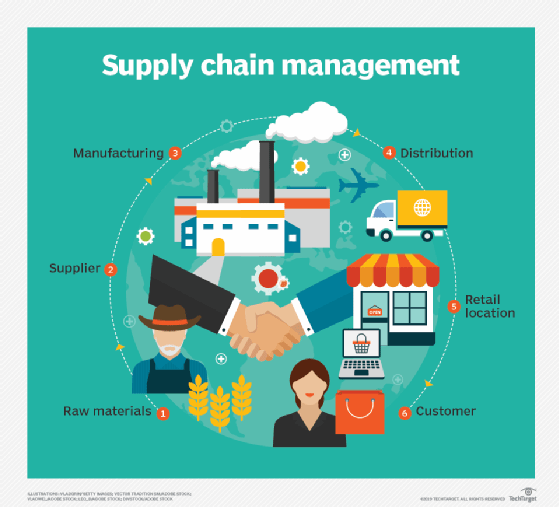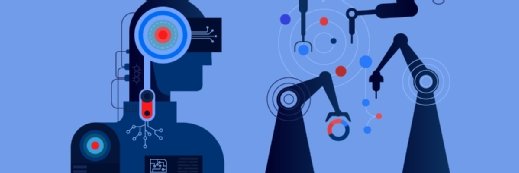
phonlamaiphoto - stock.adobe.com
Enterprises put AI in supply chain to streamline processes
Supply chain AI is helping enterprises that rely on the movement of physical parts and products streamline their operations and automate tricky last-mile problems.
There's no area of the enterprise seeing greater positive value from AI investment than business process operations. A recent survey by BI Intelligence revealed that supply chain and operations together are the third most active area implementing AI technology, with over 42% of enterprises that responded already seeing revenue gains from AI investments. In another McKinsey study, enterprises that have invested in AI technology for transportation and logistics increased profit margins by more than 5%. Where is all this positive return coming from with AI?
Automating and streamlining operations functions
The biggest area where AI is making its presence felt is in automating many of the previously manual and time-consuming processes that, while necessary, are a big drag on corporate bottom lines. For companies that have large supply chains with millions of orders or purchases to process, handling invoicing and procurement processes can be a significant drag. Increasingly, enterprises are putting AI in supply chain processes, using tools like computer vision to handle invoices and process automation tools to handle moving information across disparate systems. Many of these systems can also perform regular audits of data, catching bad actors, as well as improper or mistaken information, before they cause larger economic impact. In addition, AI plays a role in inventory management by using image recognition to perform inventory analysis and constant inventory audits.
Part of what's driving all this activity is the sheer amount of data generated throughout supply chain operations. AI and machine learning excel in handling large volumes of data, spotting patterns and anomalies, and otherwise providing intelligence and context from the mountain of data available. AI systems can spot when orders are trending the wrong way, reroute shipments when exceptions happen and handle customer support-related issues in an automated manner, reducing the need for human involvement. These systems also help improve forecasting and planning, especially around inventory, which can generate significant benefits, as well as positive ROI, for organizations that are inventory-sensitive.
In a recent report from shipping and logistics company DHL, the company said it is using AI across the board in its logistics operations. For example, DHL is using computer vision to handle labeling- and tracking-related processes, as well as inspect the condition of packages. The company is also using cognitive technologies to increase the development of autonomous transportation systems and to predict fluctuations in global shipment volumes before they occur. The company sees AI playing an augmentative role, not replacing humans but rather eliminating routine work so as to shift the labor force to higher-value work.

Improving inventory forecasting
AI systems have proven to be particularly good at spotting patterns in data that are not immediately identifiable with traditional data analytics or statistics methods. In the areas of logistics and supply chain, machine learning algorithms have been applied to identify which products are selling faster or slower than anticipated and predict more accurate inventory forecasts. Putting AI in supply chain processes can improve the accuracy of inventory forecasting, thereby reducing the understocking or overstocking of goods. These inventory forecasts, in turn, help product-driven organizations become a lot more efficient, reducing warehouse- and inventory-related costs, increasing just-in-time delivery of goods and generally improving overall customer satisfaction.
Similarly, companies are applying AI to address supply chain-related problems, such as equipment failures or unexpected issues relating to weather or regional disruptions. Machine learning algorithms have been applied to find optimal shipping routes, use intermediate warehouse locations to store goods en route to customers and even make predictions of potential service disruptions.
Automating fulfillment
Of course, one of the biggest areas where AI is gearing up to potentially disrupt the supply chain is in warehouses and the entire fulfillment side of the supply-side equation. Companies are making increasing use of automation, robotics and autonomous capabilities to complete the whole cycle of receiving inventory, stocking warehouse shelves, picking and packing products, and delivering to customers. In the not-too-distant future, few humans will be involved in this process.
Amazon has proven that its Kiva bots are capable of automating most of the pick, pack and stock functions. Baidu and Alibaba have made similar advancements to their own warehouses and stocking points. In a sign of more advancement, Siemens is currently operating a "lights-out factory," which has automated so much of the production process that it can operate autonomously in near-dark conditions without any human involvement for weeks at a time. Other companies, including Fanuc and Philips, operate lights-out factories that need no human involvement, even eliminating the need for heating or cooling for the facilities.
On the transportation side, technology firms are working hard to create autonomous delivery vehicles from trucks to delivery cars to drones. The last mile of delivery is usually the most complicated, and as such, many companies are working on technologies to help make this easier. Amazon Prime has experimented with drones, Google's Waymo is working on delivery vehicles and Uber's Otto is working on autonomous trucking.
Reducing fraud and waste
The leader in using AI to reduce fraud and waste is Amazon, which remarkably started applying AI to its supply chain as early as 2004. Since then, the company has seen a huge increase in supply chain reliability, reduction of shipping errors, reduction in supply- and order-related fraud and bad debts, and improvements in operational efficiency. Following in Amazon's footsteps, similar organizations are rushing to add AI in supply chain processes to realize the same benefits.
Additionally, AI systems are being applied to help with sourcing of products and using interest in products to assist with negotiating favorable pricing. In this way, companies that take advantage of AI can use their data to gain a strategic advantage over other companies that are simply using historical information and long-term pricing contracts that lock them into inefficient inventory allocations and poor cash flow. Companies that optimize their supply chains in this way don't need to have end-of-season clearance sales since there won't be anything to clear.
Augmenting and improving worker productivity and safety
AI is also being used to improve the productivity of workers that are involved in the supply chain. Machine learning systems can learn the proper and optimal behavior patterns of workers and monitor how employees execute tasks, providing augmented assistance and coaching to do it the best way. In addition, AI-powered chatbots and virtual agents are helping workers more easily pull information from ERP systems and efficiently work with large volumes of data. These AI systems can learn over time about how specific supply chain issues were resolved in the past, giving human workers the tools needed to respond to future events with greater speed and accuracy.
Given all the ways in which AI in supply chain is helping, it's no surprise how far e-commerce and B2B supply chains have come with the use of cognitive technologies. Companies that are adopting AI are seeing dramatic improvements in their ability to respond to customers, suppliers and the changing environment. Those that aren't are quickly being left behind.







